Leif Erikson, a Viking explorer, is known for his journey to the Americas around the year 1000 AD. Erikson is believed to have traveled to Eastern Canada, where he explored the forests and established settlements.
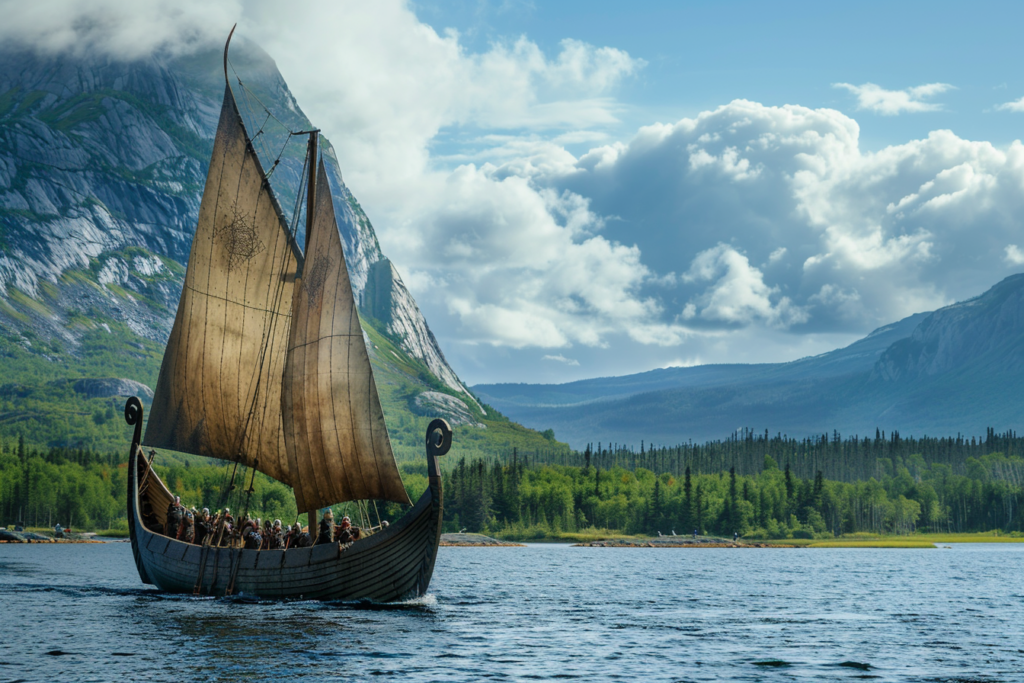
Markland is believed to be located in present-day Labrador, Canada. The area is known for its dense forests and was named by the Vikings for its abundance of timber.
Erikson and his crew are believed to have traveled to Markland after visiting Vinland. While in Markland, Erikson and his crew encountered indigenous people and wildlife, including bears and foxes.
Erikson’s journey to Markland is significant as it provides insight into the Viking exploration of North America. It also sheds light on the indigenous people and wildlife that were present in the area at the time.
The journey to Markland is an important part of Erikson’s legacy and is a reminder of the bravery and exploration of the Viking people.
The Historical Backdrop
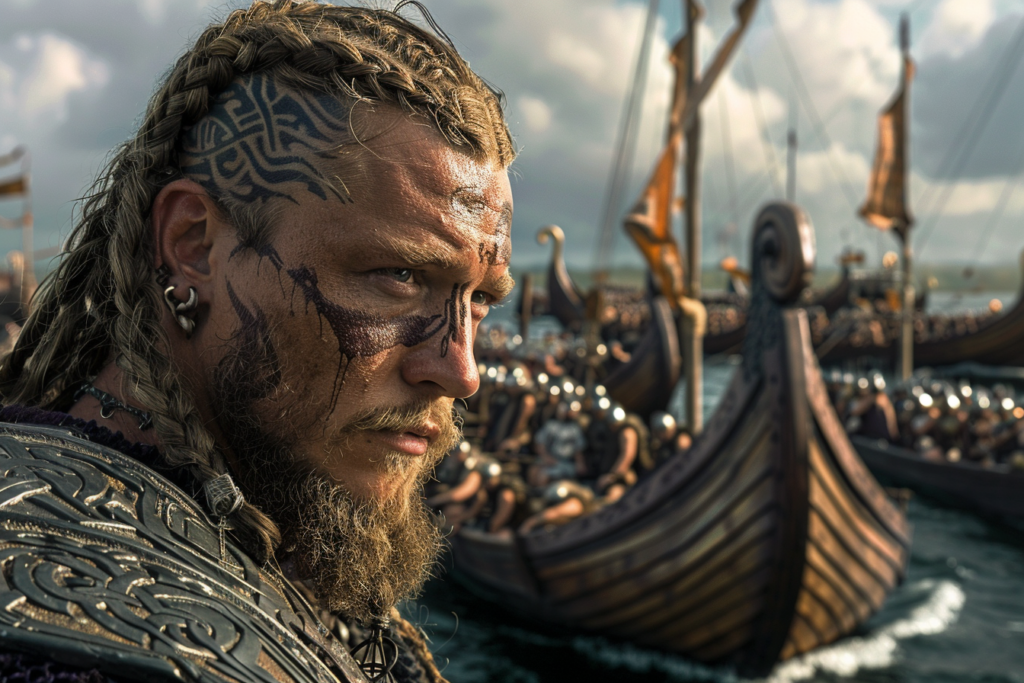
Erik the Red and Greenland
Erik the Red was a Norse explorer who is best known for founding the first settlement in Greenland. He was born in Norway but was exiled from Iceland for murder. He then sailed west and discovered Greenland, where he established the first Norse settlement.
Greenland was a challenging place to live due to its harsh climate, but the Norse settlers managed to survive for several centuries.
The settlement was established around 985 AD, and it is believed that the Norse made contact with the indigenous people of Greenland, the Inuit.
The Saga of the Greenlanders and Eiríks Saga Rauða are two of the most important sources of information about the Norse settlement in Greenland. These sagas provide insight into the daily life of the Norse settlers, their interactions with the Inuit, and their exploration of North America.
Leif Erikson was born in Iceland, the son of Erik the Red. He grew up in Greenland and became a skilled sailor and explorer.
In the early 11th century, Leif Erikson set out on a journey to explore the lands to the west of Greenland. He discovered a place he called Vinland, which is believed to be present-day Newfoundland, Canada.
Leif Erikson’s Expedition to the New World
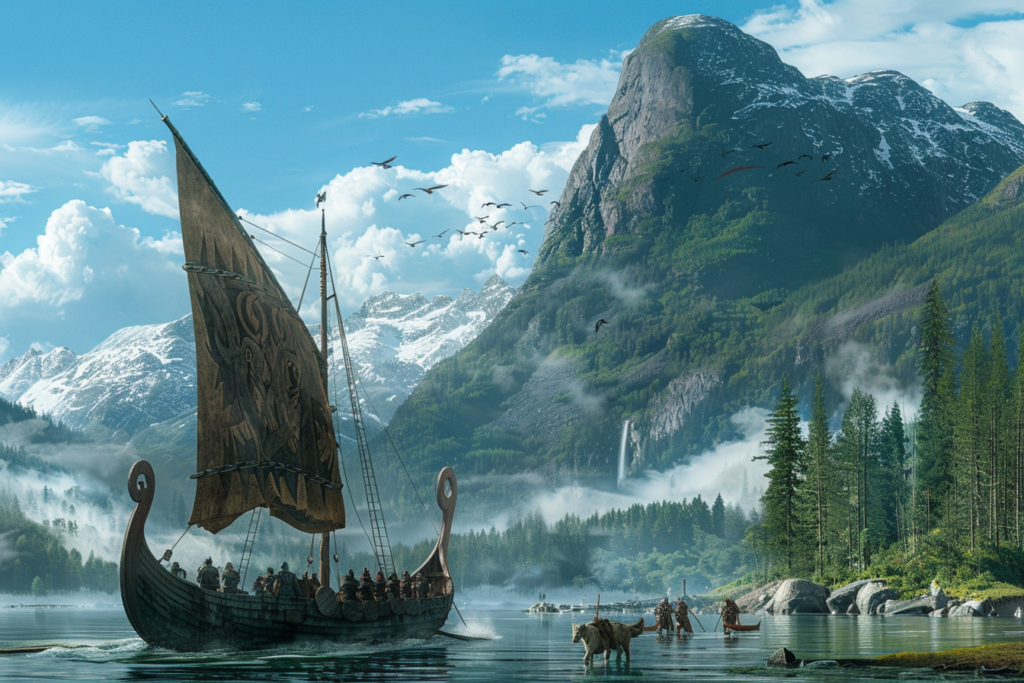
Leif Erikson, also known as Leif the Lucky, was a Norse explorer who is credited with being the first European to have set foot on North American soil. His expedition to the New World was a result of his desire to explore new lands and expand the reach of the Viking civilization.
The Journey Begins
In the year 1000 CE, Leif Erikson set sail from Greenland with a crew of 35 men. They first reached a land that they named Helluland, which is believed to be modern-day Baffin Island.
From there, they sailed south and reached a forested area which they named Markland, believed to be modern-day Labrador.
Discovering Vinland
Leif Erikson and his crew continued their journey south and eventually reached a place which they named Vinland. It is believed to be modern-day Newfoundland, specifically the area around L’Anse aux Meadows. The name Vinland is derived from the grapes that they found growing in the area.
The Significance of Vinland
The discovery of Vinland was significant as it marked the first known European exploration of North America. It also showed that the Vikings had the capability to undertake long-distance sea voyages and explore new lands.
The Vinland Sagas, two medieval texts that describe the Viking expeditions to North America, provide valuable insights into the history and culture of the Viking civilization.
Leif Erikson’s expedition to the New World was an important milestone in the history of exploration and discovery. His journey paved the way for future explorers and helped to expand the reach of the Viking civilization.
Interactions with Indigenous Peoples
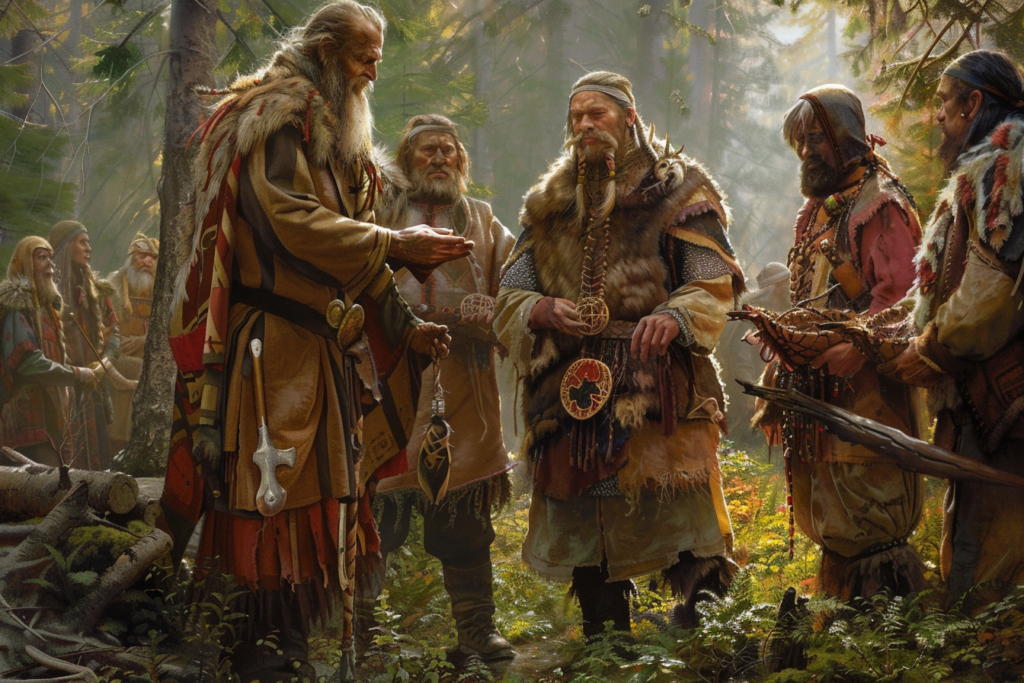
First Encounters
Leif Erikson and his crew were the first Norse Vikings to have contact with the Indigenous people of Eastern Canada. It is believed that the first encounter occurred when the Norse Vikings landed in Vinland, which is modern-day Newfoundland. The Indigenous people in the area were known as the Beothuk.
The initial interaction between the two groups was friendly, as the Indigenous people offered the Norse Vikings food and water.
The Norse Vikings, in turn, offered the Indigenous people gifts such as red cloth and milk. However, there were also some skirmishes between the two groups, as the Norse Vikings tried to establish their presence in the area.
Cultural Exchange and Conflict
Despite the initial friendly interaction, there were also conflicts between the Indigenous people and the Norse Vikings.
The Norse Vikings were known to have established a settlement in the area, which they called the Eastern Settlement. This settlement was located in what is now L’Anse aux Meadows.
As the Norse Vikings tried to establish themselves in the area, there were conflicts with the Indigenous people. The Norse Vikings were known to have taken resources from the Indigenous people, such as furs and skins. This led to conflicts between the two groups.
Despite the conflicts, there was also cultural exchange between the two groups. The Norse Vikings and the Indigenous people traded goods, and there was also some intermarriage between the two groups.
This cultural exchange helped to establish a peaceful relationship between the two groups, which lasted for several years.
Legacy of Viking Exploration
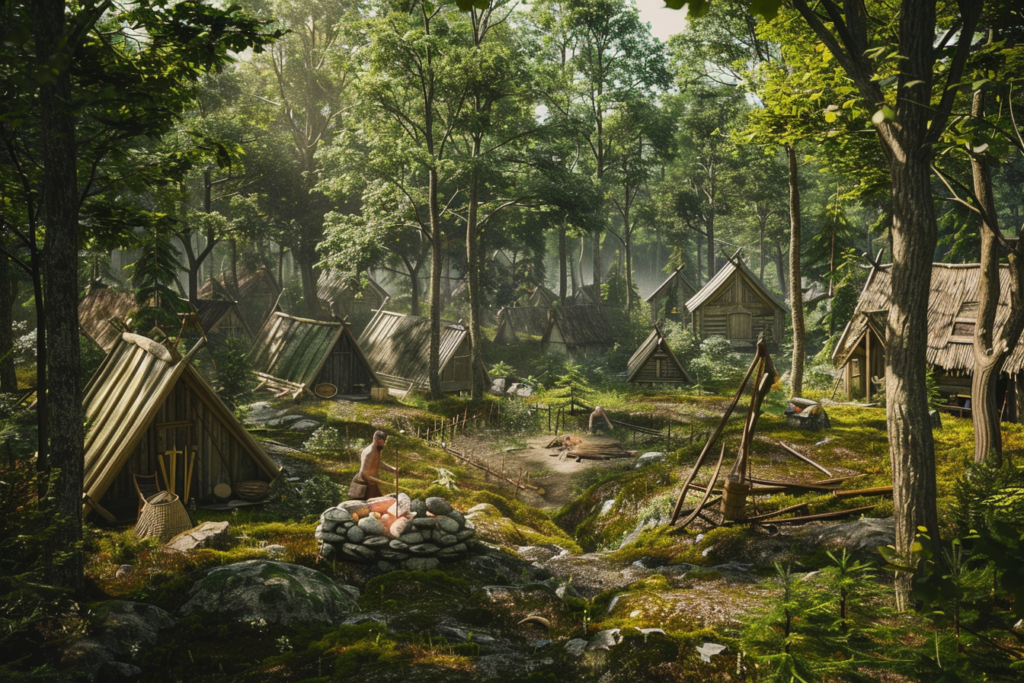
The Viking exploration of North America left a lasting legacy that can still be seen today.
One of the most significant archaeological discoveries is the Norse colony at L’Anse aux Meadows, located on the northern tip of Newfoundland. This site was discovered in the 1960s and is believed to be the first European settlement in North America.
The remains of eight buildings were found at the site, along with artifacts such as iron nails, a spindle whorl, and a bronze cloak pin.
These discoveries provide evidence of the Norse presence in North America and shed light on the daily lives of Viking settlers.
Influence on Modern Culture
The Norse sagas, which tell the stories of the Viking explorers, have had a significant impact on modern culture. These stories have inspired countless books, movies, and TV shows. They have also helped to shape our understanding of the Viking Age.
In addition, the Norse tradition of naming children after their fathers is still practiced in Iceland today. Many people around the world have adopted Viking-inspired names.
The Viking exploration of North America also had a profound influence on the history of exploration. While Columbus is often credited with discovering the New World, the Viking voyages to North America took place almost 500 years earlier. These voyages paved the way for European exploration of the Americas and helped to shape the course of history.
In 1964, Congress declared October 9th to be Leif Erikson Day, in honor of the Viking explorer who is believed to have been the first European to set foot on North American soil. This day is celebrated each year to recognize the contributions of Viking explorers and their impact on the history of exploration.
The Viking exploration of North America has had a lasting impact on European and North American history. The archaeological evidence and Norse sagas provide a glimpse into the lives of Viking settlers, while the legacy of exploration and discovery continues to inspire people around the world.

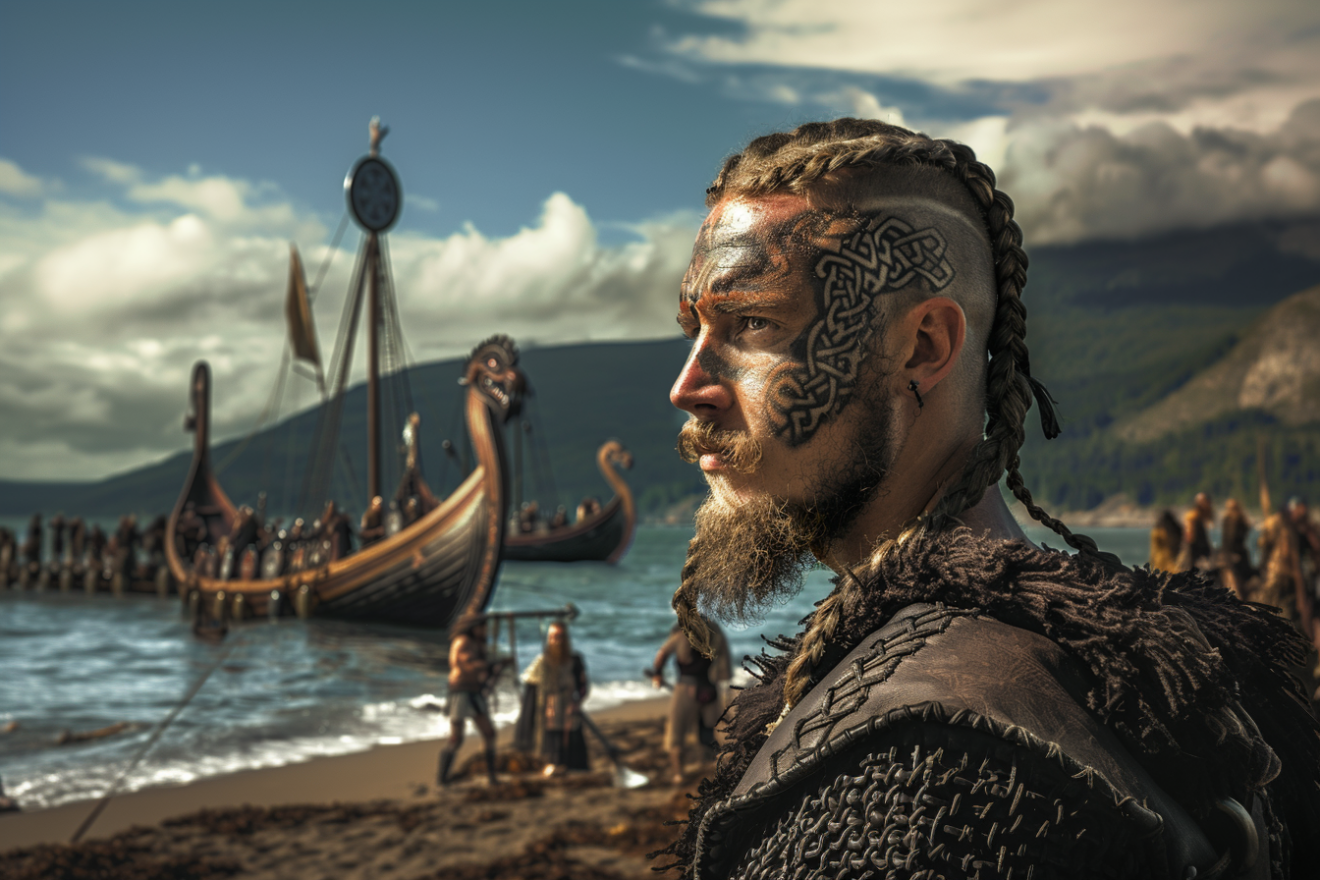
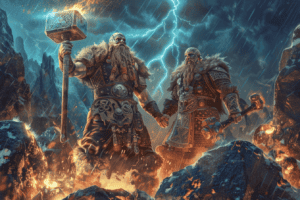







Add Comment